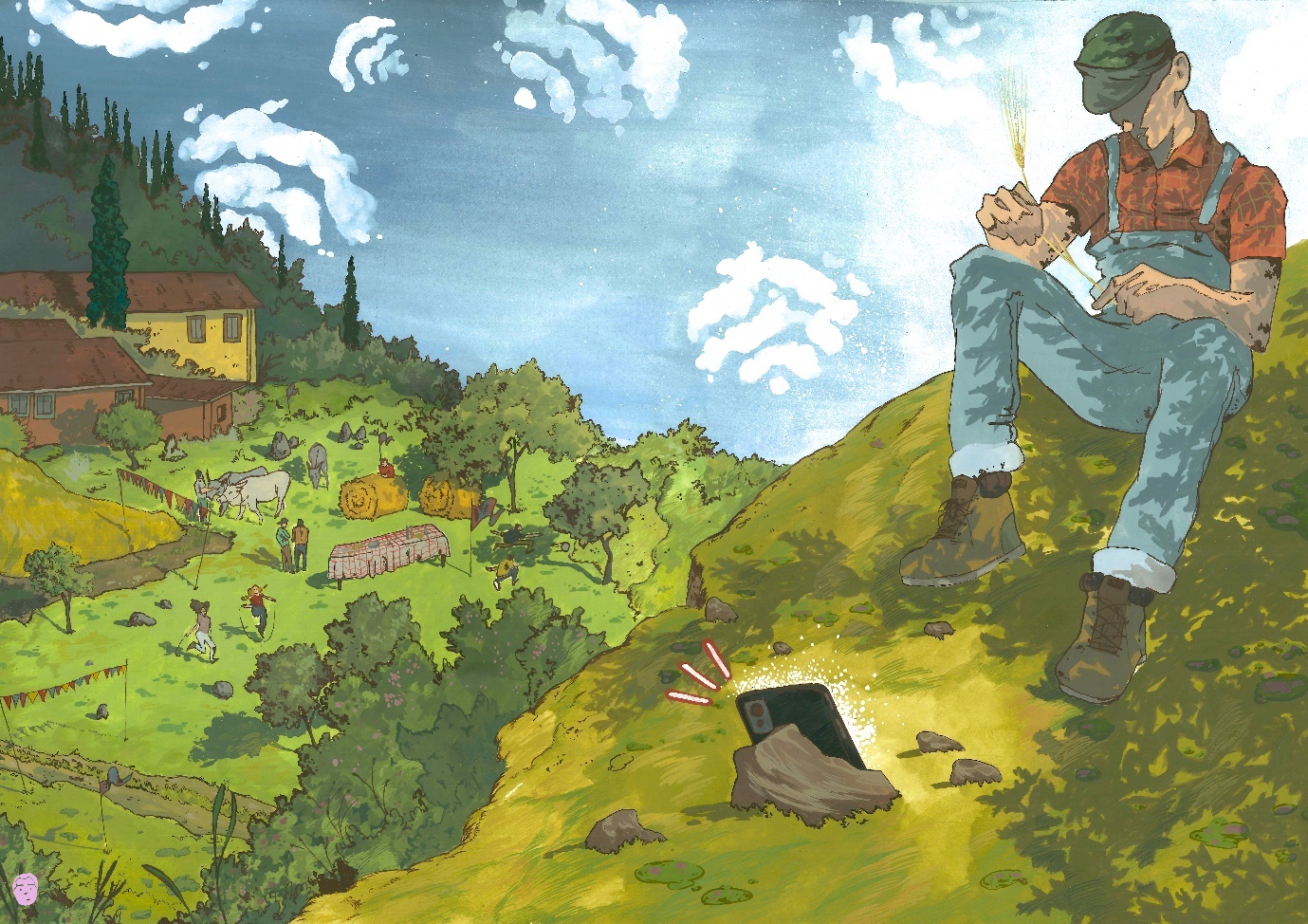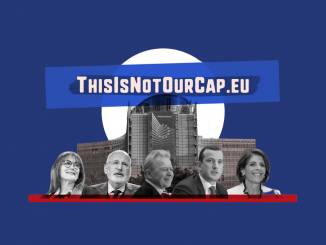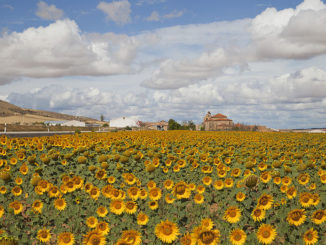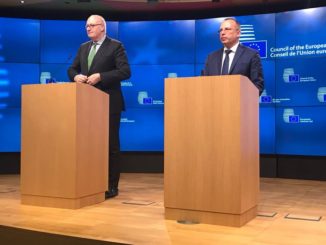
Digitalisation and on-farm diversification are the topics addressed by Dr. Matteo Metta as part of his joint Ph.D. research with the University of Pisa and Ghent.
Assembling digitalisation in farms that coherently integrate farming, food, and rural development in a multifunctional way is not easy, but possible. Yet, the process and consequences of digitalisation are ambiguous and deserve considerations that go beyond the digital realms.
To set clear directions for responsible digitalisation in agriculture, the CAP and the Farm-to-Fork Strategy should integrate a new policy target aimed at substantially increasing the current low share of EU farmers engaged in other gainful activities connected to the farm to at least 25% by 2030. This target can be quantitatively and qualitatively monitored through existing EUROSTAT data.
Why this study on digitalisation and on-farm diversification?
According to the 7th General Census of Agriculture in Italy, as many as 11,022 diversified farms have disappeared in the space of ten years (from 76,148 in 2010 to 65,126 in 2020).
This means that in addition to the general decline in the total number of farms (-487,000 in the same decade), in Italy there are fewer and fewer farms that carry out extra-farming activities related to the farm such as food processing and direct sales, the provision of contractual work, agritourism, or landscape management or forestry.
Unfortunately, this trend could be masked by increasing values in percentage points, as shown in the case of Figure 1 produced by ISTAT, the Italian National Institute of Statistics.
The situation at the European level is similarly concerning and the share of farms engaged in extra-farming activities related to the farm is around 5 to 7%, according to Eurostat data since 2007.

At the same time, digitalisation continues to advance in agriculture and is proposed by many as a turning point (“game changer“), so much so that it deserves more and more attention, priorities, and public funds from agricultural to research and innovation policies. Drones, cloud platforms, blockchain, and robots fill the collective imagination and discourses on the future of agriculture, but these scenarios tell little about the different realities experienced on the ground, especially from the specific point of view of farmers who are engaged in on-farm diversification.
In this empirical and exploratory study, Dr. Matteo Metta tried to analyse the way in which digitalisation is assembled in the practices and realities of diversified farms. These farms, in addition to cultivating or breeding, engage in related activities such as agritourism or social farming. Diversified farms are distinguished in the scientific literature for their dynamic, relational, and multisectoral character, as well as precarious and stressful conditions, sometimes at the limits of farm resilience.
Through the comparison and individual experiences of 14 diversified farms selected from Belgium, Ireland, Italy and Japan, the research explored digital agriculture not as a theoretical exercise, but as a journey to understand the needs, the decisions made, and the numerous impacts that emerge in the process, too often left to dichotomous debates and decontextualised judgments.
Between the site and the clouds: on-farm diversification in the age of cloud-computing
In relation to the expectations placed on the virtual world and digital technologies as a source of transformation, one of the major observations that emerged from this empirical research is that farm diversification is strongly connected to human work, markets, interpersonal relationships, as well as the material conditions of our countryside.
Therefore, investments in the direction of digitalisation “for” diversification must go hand in hand with a general restoring of diversified agriculture and rural areas. Digitalisation cannot overshadow the precarious conditions of handicrafts, nature, farmers’ housing, or rural public infrastructure that are so vital for diversification.
In the search for digitalisation, Dr. Metta was confronted with farms that instead of digital activism could boast of other strengths, such as history, product quality, or intra-family relationships as conditions and driving forces of diversification. At the same time, digital technologies are still present in these farms and play an increasingly recognised role.
The second observation that emerged concerns purely digitalisation in the technical sense. Rather than modern large-scale automated tractors, sophisticated robots, artificial intelligence, and so on, diversified companies show greater reliance on internet connection and cloud-computing technologies (marked in yellow, Figure 2), such as online infrastructure to store data (Google Drive, Dropbox) or online software to perform numerous tasks such as video conferencing, bookings, sales, communication, community relationship management, etc.
Yet, in the small sample interviewed, some exceptions also emerged such as the Geocaching game “Intrigue à la ferme” based on augmented reality and GPS, a technology developed by the Walloon region in Belgium. In addition to technologies, the research has highlighted the key role of skills and very precarious physical conditions (hardware) in these companies, which are not always equipped with spaces, ergonomic chairs, telephones, or computers updated for professional purposes and with secure data storage.

Digital technologies: which one, by whom, and for what?
More specifically, cloud-computing technologies used for agricultural diversification allow for numerous functions and tasks, as shown in Figure 3.
The design of the technologies themselves is becoming more and more multifunctional and applied by farms creatively for different purposes.
There are technologies that make it possible to complete entire chains of transactions, from the offer to the payment of users and the collection of feedback to improve products and services.
There are others that are less vertical and serve the preparation of the offer such as administration, horizontal cooperation between family members, or value creation. In most cases, farms do not own these technologies but are “users”.
It would be too expensive to build and upgrade technologies for a small, single farm. Some technologies belong to big-tech corporations like Google, Meta, and Microsoft. Others, on the other hand, are developed from the bottom up, at the company, collective, regional or national level.
For example, Accueil Champêtre is an online window developed by the Walloon Region in Belgium that shows all the offer of agricultural diversification at the regional level.
Elloha is a French platform that allows farmers to synchronise multiple sales and booking channels, and solve one of the difficulties of agritourism farms in Italy, increasingly pressed to sell on multiple platforms, as well as on their own websites and social media.

It is clear that there can be a lot of complementarities between these technologies but also a lot of (healthy and unfair) competition.
For example, Booking.com based in several places in the world, is not among the six large gatekeepers regulated by the new Digital Service Act approved by the European Union and enjoys a fiscally privileged and dominant position in the sector compared to small rural tourism platforms registered in national territories such as agriturismo.it in Italy, Gîtes et chambres d’hôtes de Wallonie in Belgium, or Accueil Paysan in France.
Based on several differences, the thesis attempts to distinguish a type of digitalisation englobing diversification, typical of digitally mediated transactions led by commercial platforms and global circuits of capital and data, as opposed to a diversification englobing digitalisation.
As exemplified in La Clique en Senne or Accueil Paysan, diversification englobing digitalisation is characterised by existing actors rooted in on-farm diversification, who lead the design, take ownership, and maintain the control of their own digital technologies and integration process.
Each of these models of digitalisation presents challenges and opportunities that go beyond the technical features.
For individual diversified farms, it is not always easy to compare and position themselves with respect to these technologies considering numerous factors: ease of use, required upgrades, user base, costs but also with respect to deeper and ethical issues, such as transparency, geopolitics, payment of customs duties by the technology providers, or the inappropriate use of data of each technology.
Navigating ambiguities: the impacts of digitalisation
By comparing the experiences lived in each farm and across different ones, the impacts of digitalisation show a picture that is multi-shaded rather than black and white.
As regards the identity of these farms, in some cases, digitalisation has served to protect or promote the values and peculiarities of their profession.
In other cases, the interviewed farmers complained about the homogenisation of multimedia material and the appropriation of rural images by the corporate world.
With respect to labour, some respondents shared the progress made by handling documents or routine administrative procedures faster (scanning, sending, registering, etc.).
In other cases, digitalisation has been experienced as a streamlining of the bureaucratic burden only in favour of public authorities and an offloading of the digitalisation costs on the pockets of farms, for example, forced to pay an annual fee to private companies for issuing publicly recognised email addresses or to comply with new telematic procedures.
Chapter 4.4.2 of the thesis illustrates many other examples of impacts with respect to women farmers, the relationships inside and outside the farm, and the performance of diversification activities.
Retrieving the compass: destination diversification
Faced with this complexity, the thesis argues that it is necessary to continue to clarify the real opportunities and intervene promptly with regard to the risks posed by digitalisation – before this process could threaten farms’ autonomy and block agriculture in the current dominant paradigm based on specialisation and intensification.
If we are looking for a turning point in the agricultural system, the thesis suggests starting with a review of the overall policy framework rather than just relying on the development of new technologies.
For example, in more than 60 years of the Common Agricultural Policy (CAP), an objective and ambitious quantitative target to support on-farm diversification is still missing. Italy does not need to wait for a new reform in 2027 if it wants to start a change. This objective, which is so important for rural areas, but also for food security and farm viability, could be integrated at national and regional level with the annual revision of the Italian CAP Strategic Plan. This objective could be set at European level with a strengthening of the European Farm-to-Fork Strategy.
“Diversification is not the panacea to heal all the problems of Italian agriculture. However, making diversification easier and promoting it is certainly a vision that deserves commitment, obviously also with the support of technology but not only: processing cooperatives or farmer-cook-school alliances are just some of the many paths to follow.”
Increasing the current share of around 7% of farms in Europe engaged in other gainful activities to at least 25% or more by 2030 would be a first step to steer digitalisation policies in the right direction and in a broader framework of interventions.
Targets for policy change are necessary but not always sufficient. It is necessary to be vigilant about the monitoring and quality of public policy targets and to avoid that farm diversification in countries such as Italy does not only result in large private installations of solar panels or biogas instead of numerous possibilities to integrate agriculture with rural development and sustainable food.
Italy can do a lot at the legislative level with respect to the regulation of the CAP or online platforms in the rural economy and agri-food markets.
At the same time, multifunctionality in agriculture is also made up of knowledge, movements, and collective actions.
For this reason, it is necessary to support a bottom-up dynamism that creates alliances between farms and a vast network of actors such as technology experts, schools, municipalities, public canteens, diversification mentors, or computer engineers.
Metta, M. (2023) Digitalizzazione e diversificazione in azienda. Sfide e opportunità per un’agricoltura multifunzionale e diversificata. Tesi di dottorato congiunta. Università di Pisa, Italia e Università di Gand, Belgio.
Download Dr. Matteo Metta’s Ph.D. thesis in full
More on Rural-Proofing Digital Agriculture
Strengthening Multifunctional Agriculture through Digitalisation: Insights from Europe and Japan
Rural Japan | Agroecology, Diversification and Digitalisation on Hashimoto Family Farm
Rural Japan | Diversification and Digitalisation on a Dairy Family Farm
The Influence of EU Policies in National Rural Digitalisation
Italy | Digitalisation, Short Food Chain and Sovereignty – Fuori di Zucca
A Rural Proofed CAP post 2020? – Analysis of the European Parliament’s Position
Rural Dialogues | The Three Conditions of Sustainable Rural Digitalisation





